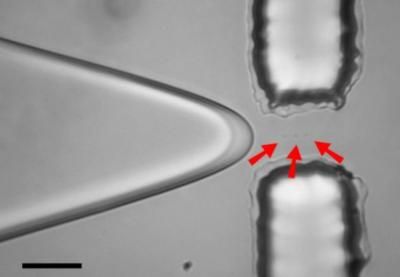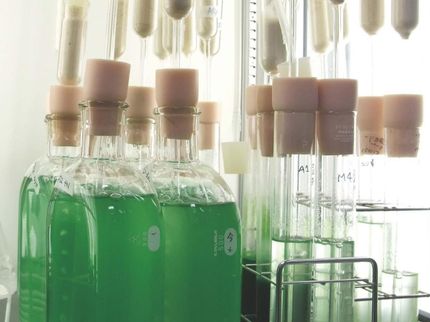Discovery of the adherence mechanism of red algae to the rock
Advertisement
Geologists of the University of Granada - UGR have successfully described for the first time ever the biological mechanism that explains how calcareous red algae grow on rocky substrates. This finding allows us to know the physiology of this type of algae better and explains an existing paradox in the field of Palaeontology: the lack of these algae in sedimentary rocks of fossil cliffs. In particular, an organic layer lying between the red algae that grow on rocks and the stone surface has been discovered. Indeed this is an organic thin layer of polysaccharides, very efficient during the growth and development of algae, but once the algae dies, this layer has no longer adherence and causes algae to come away from the substrate where they live.
Juan Carlos Braga, Antonio Checa and Julio Aguirre, researchers from the palaeography and sedimentary basin group of the Department of Stratigraphy and Palaeontology, have made such discovery after developing two projects funded by the Spanish Ministry of Science and Innovation. Red algae, organisms that live stuck on shore cliffs which are also abundant in the rocky surfaces of the Spanish beaches, which in some cases, is up to 60% of the total surface. However, such algae are not stuck to their usual substrates in the fossil record. In order to find an answer to this phenomenon, the reason why these algae perish with the pass of time and disappear from the fossil record has now been found out.
’With our research work, it was clear for us that the key could be in the adherence system that rhodophyta use, but it is a topic that no researcher in the world had planned to research into so far, and consequently we are very happy with the results’, Julio Aguirre said.
Red algae are organisms that calcify their skeleton, that is, their cell walls of their cells precipitate calcium carbonate, and therefore have an enormous relevance as fossils. They are organisms very usually found in any marine fossil basin. There are many different species on sedimentary remains, but they are not stuck on the walls of old cliffs.
Most read news
Other news from the department science

Get the chemical industry in your inbox
By submitting this form you agree that LUMITOS AG will send you the newsletter(s) selected above by email. Your data will not be passed on to third parties. Your data will be stored and processed in accordance with our data protection regulations. LUMITOS may contact you by email for the purpose of advertising or market and opinion surveys. You can revoke your consent at any time without giving reasons to LUMITOS AG, Ernst-Augustin-Str. 2, 12489 Berlin, Germany or by e-mail at revoke@lumitos.com with effect for the future. In addition, each email contains a link to unsubscribe from the corresponding newsletter.
Most read news
More news from our other portals
Last viewed contents
Arenium_ion
BP Returns to Profit in Third Quarter with Strong Operating Performance
Aromatic_ring_current





























































